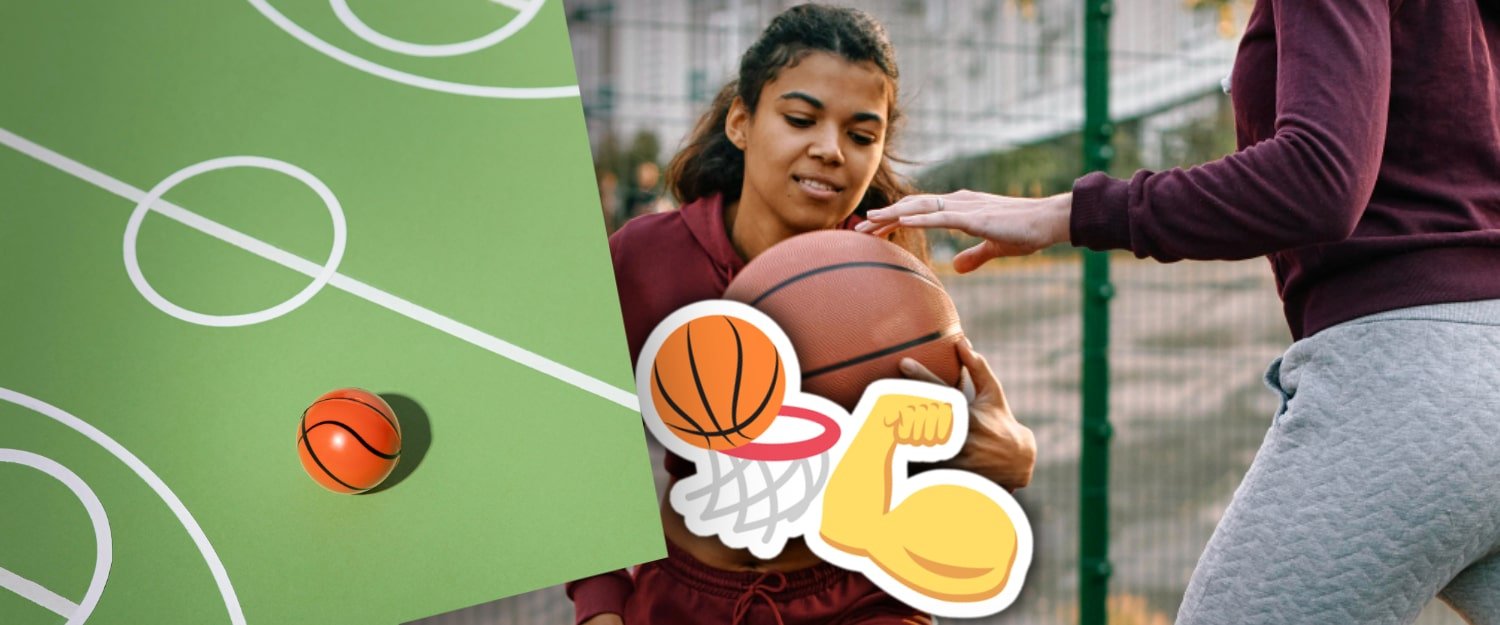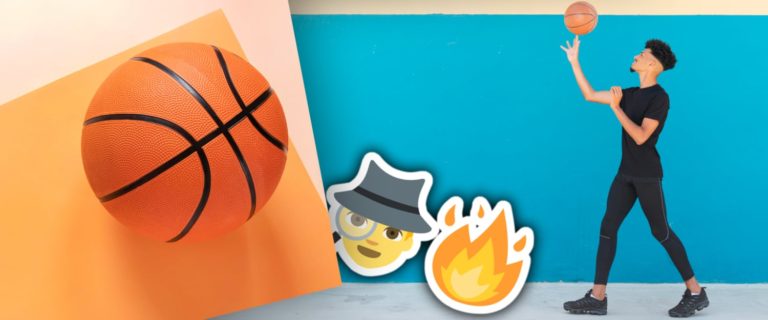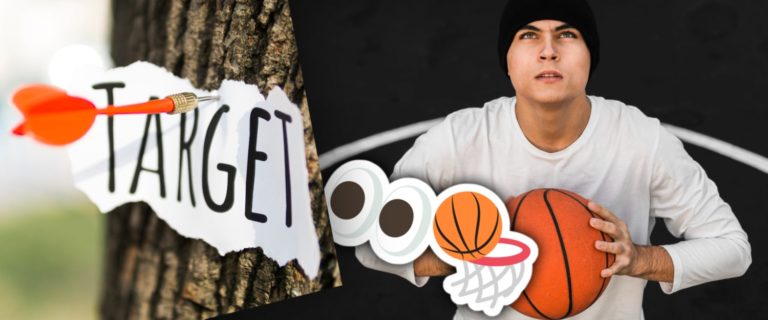Guarding In Basketball: The Ultimate Guide
Guarding in basketball is one of the most important aspects of the game. It’s also one of the more difficult ones to learn and perfect. The idea behind guarding someone in basketball is to deny them access to their desired destination while staying on your side of the court.
This article will go over what guarding entails, how you can train it, and give some tips for guarding against different types of players.
What is Guarding in Basketball?
The first step is to understand guarding in basketball. This involves staying between your player and the basket while playing defense, without impeding their path of movement towards the basket.
The defender should stay on his side of the court by moving sideways along with his opponent when they try to move around you. If someone tries to cut back toward the middle of the court, you should anticipate this and cut them off before they can get there.
Stay Low, and Keep Your Distance!
When guarding someone in basketball it’s important to stay low while keeping your feet shoulder-width apart. This will make guarding much easier because you’ll be able to move around more easily and quickly when needed.
Also, if somebody tries to go under one of your legs on their way past, make sure that you keep up with them by sliding both feet at once. Instead of just stepping back with one leg or the other.
Remember to begin with your shoulders lower than the person you are guarding. We call this the shoulders game. By keeping your shoulders lower at the start and then continuously throughout the penetration and drive, you are more likely to get to the spot before the offense.
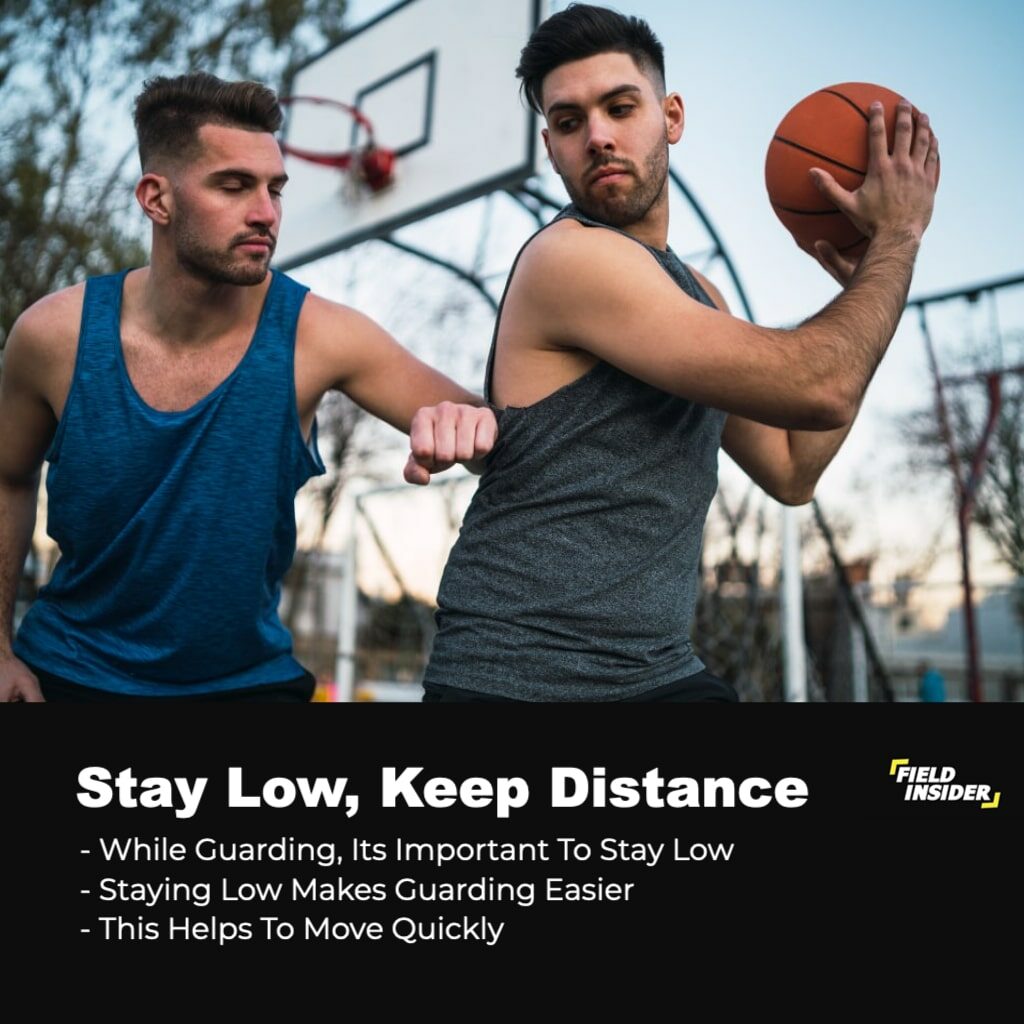
The moment that they try to take advantage of a lazy slide is the moment where guarding pays off for you! It’s also important not only to know how far away from an offensive player that you are allowed to stand, but also to know what your position on the court can allow you to get away with.
Improving Your Guarding in Basketball
Now that guarding in basketball has been discussed. It’s time for us to talk about how you can improve guarding skills through training. This article is focused more specifically on guarding against different types of players. We will leave some key tips up to the discretion of the reader when appropriate.
Practice guarding someone who is more skilled than you as the first step to guarding improvement. In this manner, you can learn from them what to avoid doing and how to respond to it. Try to maintain your distance if they move quickly. so that they won’t slide as readily under your legs.
When guarding a huge man (or lady) or when playing basketball, always keep yourself down to the ground if they are bigger than you. while attempting to always maintain a distance between them and the basket!
Some of our favorite drills for practicing guarding are:
Keep Away
The offensive player tries his best at getting open by driving around defenders before shooting an open shot with no defense playing him whatsoever. Once he misses, then another defender takes over until he scores.
The defender must keep his hands up at all times when guarding in basketball to avoid fouling! Once the offensive player has scored, they switch roles so that both players can get a turn guarding each other.
Shadow Drills
While guarding somebody in basketball. Try dribbling with your head facing toward them instead of looking down at the ball while dribbling it. This will help you learn how to anticipate what they’re going to do next. And prepare for guarding against their movements earlier on during practice or games!
Partner Guarding
Have one person guard another one who is trying their best to score by getting open through cuts around defenders before shooting an open shot with no defense playing him whatsoever.
Keep your distance and hands up to avoid fouling! Once the offensive player has scored, they switch roles so that both players can get a turn guarding each other.
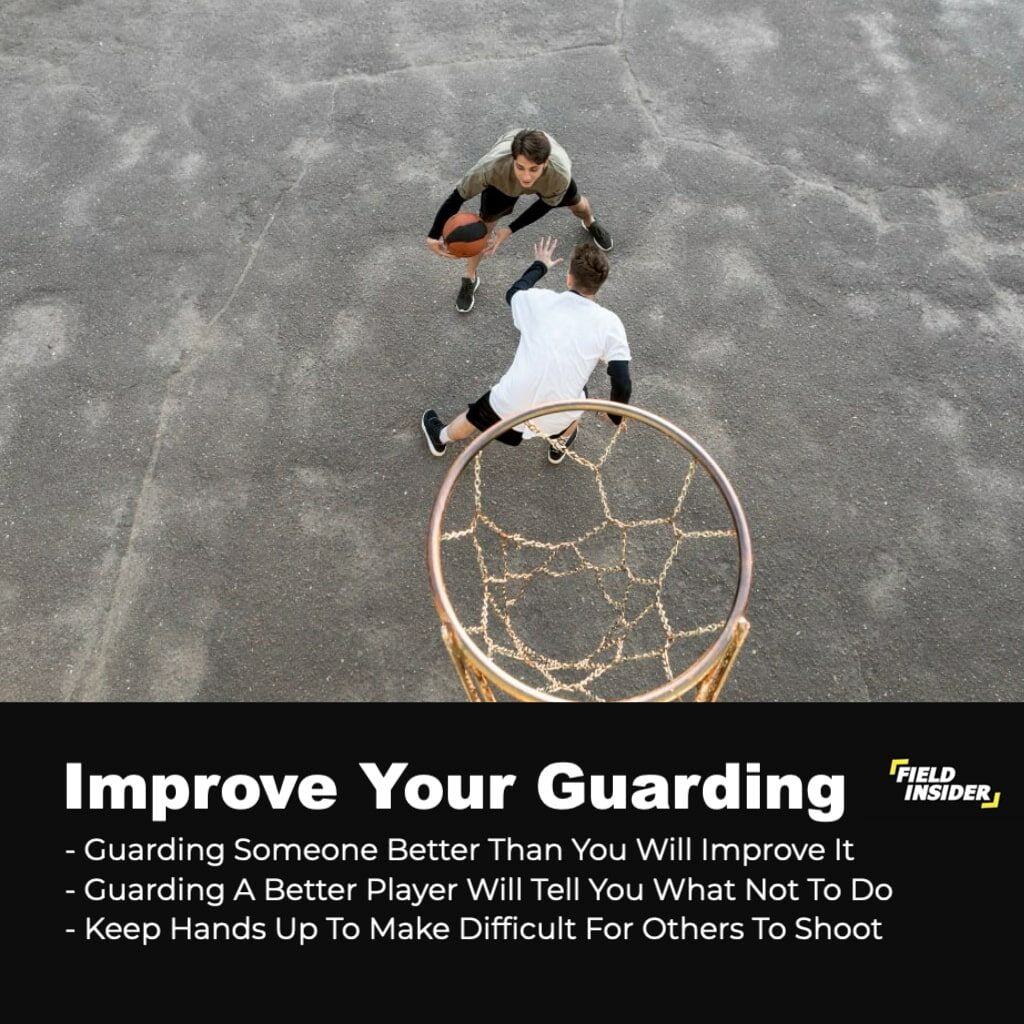
Different Guarding Techniques
Basketball teams can approach a defensive game in a variety of ways. Learning how to mix these skills is essential for your development as a defensive player because defensive skills entail a variety of abilities. To improve your game, use the following basketball defensive strategies:
1. Defensive stance
One of the most crucial basics in the game of basketball is the defensive posture, which is where good defense starts. To assume a defensive stance, place your feet a little farther apart than shoulder width apart.
Your body should be in a position that is halfway between standing and crouching so that your center of gravity is reasonably low, facilitating lateral movement, but not too high, preventing you from easily losing your balance.
Your hands should extend out at roughly shoulder height, your knees should be slightly bent, and your back should be straight. Your distance from your opponent should be around arm’s length.
By doing this, you’ll be able to respond fast, be prepared with your hands for blocks, deflections, or steals, and keep the pressure on your adversaries.
2. Close out
When a defensive player closes in on an attacking player, they slow down by moving quickly in little increments. The goal is to crowd the offensive player, throw them off balance, and reduce their ability to pass or shoot, thus it’s crucial to keep your hands up and ready.
3. Fronting
Fronting occurs when one player moves between an offensive player attempting a pass or shot toward another teammate. Who may be cutting into open space under them at just the right moment. This guarding technique is usually employed when guarding smaller, faster players.
The fronting technique is most effective when guarding somebody in basketball if you can keep your feet shoulder-width apart at all times to prevent the offensive player from going around you. This guarding technique is used by players who have a lot of experience guarding, so be prepared for it!
4. BOXOUT!
Basketball fundamentals include boxing out. It is used by both offensive and defensive players, but when playing defense, it is crucial to work on this skill.
By putting yourself between the ball (or the basket) and the offensive player you are guarding, you are essentially adopting the defensive position known as the box out. By pressing your opponent backward and hindering their ability to rebound, you can use your low center of gravity to your advantage.
5. Help Defense
Help is a specialized term used in basketball defensive strategy to describe supporting other players’ defense. A skilled dribbler will surely evade their defender on occasion, but it takes an entire team to stop them from doing so.
Excellent team defense consists of being able to rapidly transition from an off-ball to an on-ball defender, halt a baseline drive or a quick pass, and switch to double-team defense.
This guarding technique works great if there are other defenders on help-side defense around because it gives them time to come over for more support as well as cover-up potential rebounds off missed shots.
Quick Review for tips on better defense
Defense is 90 percent heart and 10 percent skill, and your success is determined by your will and commitment to the task. That being said, there are a few teaching points to remember when playing perimeter defense on the ball:
- Stay Low
- An Arm’s Length
- Keep Steps Short
- Be mindful of your torso
- Communicate with your teammates
- Watch out for fouls
- Stay balanced
- Get in Shape
The best way to become a great defender, of course, is to know your opponent. Watch film and read scouting reports. The best defender is the smartest defender. Most people would just credit athleticism for player’s defensive abilities, but it was much more than that. It includes intelligence in using this athletic ability (quickness, strength, balance, footwork) that allows defenders to shine.
Different Types of Guards
We could not mention guarding in basketball without mentioning the different types of guards on the court:
The Point Guard
The point guard is usually the smallest and fastest player on a team who is responsible for bringing the ball down court to start plays as well as guarding smaller players like small forwards or shooting guards. Some of the best point guards in basketball history include Steve Nash, Russell Westbrook and Allen Iverson, to name a few.

The Shooting Guard
The off-guard tend to be bigger than point guards as they are usually taller, more athletic, and can shoot better from long range; their job is also to bring the ball down the court and guard players who are taller than them.
The shooting guard (off-guard) is often a team’s best shooter from behind the three-point line; their job is to score points for their team by shooting layups or open shots from long range when they get them!
This guarding technique works great if there are other defenders on help-side defense around because it gives them time to come over for more support, as well as cover-up potential, rebounds off missed shots.
Conclusion
Thanks for reading our blog on guarding in basketball. We’ve covered most of the basics, along with some tips to help you improve your technique and train this defensive strategy. If there are any other questions or comments about how to guard better, please let us know!


